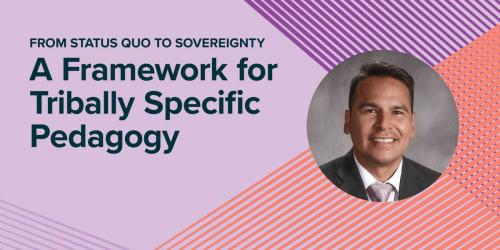Actions Educators Can Take to Interrupt Narratives That Are Damaging to American Indian and Alaska Native Students

A persistent narrative endures in the United States that indigenous people no longer exist or that we exist only as one-dimensional caricatures or stereotypes.
This narrative gets reinforced in casual conversation, school curricula, Native American Heritage Month tributes, racist Halloween costumes and more. We experience it every time we step outside our door onto once-, twice-, thrice-stolen land.
This deeply damaging narrative—which is especially harmful for American Indian and Alaska Native (AIAN) youth—prevents people from understanding the reality of indigenous people in Oregon and elsewhere, and we must confront it and interrupt it at every turn.
We can begin to chip away at misconceptions by better informing ourselves about our own state, and schools must play a vital role in this process.
What All Educators Need to Know
On a human level, it’s important to understand that AIAN people, like all people, are complex and whole individuals. Along those lines, there is not one universal, unilateral experience of AIAN people.
In addition, it is critical to know that:
- Not all people who identify as AIAN live on or near a reservation
- Not all people who identify as AIAN are enrolled in a tribe or nation
- Some people who identify as AIAN are multiracial
- Not all people who identify as AIAN can be recognized by their physical appearance (nor should anyone)
- AIAN identities are shaped by many complex social, political, historical, linguistic and cultural factors
- Native American tribes maintain a unique status as sovereign nations within a nation
Oregon educators can help disrupt the negative narrative by reviewing and vetting the curricula they teach our children. They can also educate themselves by:
- Reading the amazing curriculum created by the Confederated Tribes of Grand Ronde
- Attending the annual Oregon Indian Education Association conference or the National Indian Education Association conference
When educators take these actions, it helps them gain a greater understanding of our youth in schools. It also helps them deconstruct the static, erroneous, one-dimensional image of Native Americans that they may have passed on to their students.
Culture as an Intervention
In this Aspen Institute video, human rights lawyer Bryan Stevenson reminds us that Germany and South Africa—albeit imperfectly—have attempted reparation, healing and apologies for the Holocaust and apartheid, respectively.
Yet, in the United States, we still venerate the aggressors of colonization in statues and on the face of mountains.
When teachers use a curriculum that, for example, requires elementary school students to draw pilgrims alongside Indians wearing feathers, it erases our existence bit by bit. It reduces us to mistruths and stereotypes, and it keeps us relegated to a fabricated Hollywood farce.
Many distinct indigenous cultures, languages and ways of being have survived and continue to transcend erasure and colonization. Examples of how we are exercising our sovereignty include language revitalization, treaty right restoration and Indigenous governance. It is in these exemplars of survivance and self-determination that educators can frame culture as intervention and begin to play a role in our ability to thrive.
To support efforts to educate all students about the Native American experience in Oregon, Education Northwest is collaborating with the Oregon Department of Education and the state’s nine federally recognized tribes to develop a statewide curriculum that includes tribal history, tribal sovereignty, culture, treaty rights, government, socioeconomic experiences and current events.
Until this curriculum is ready for distribution, you can interrupt the negative narrative by educating yourself and teaching AIAN culture in your classroom. You can also demand more from your school leaders.
Specifically, ask them to provide the professional development and educational resources necessary to heal the erasure.



